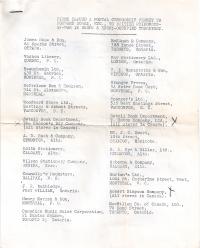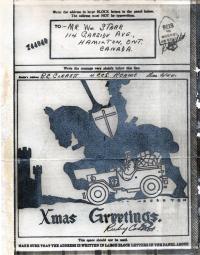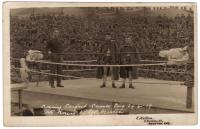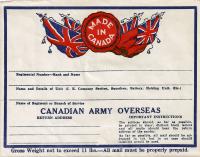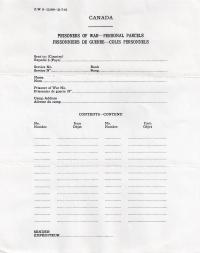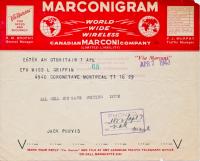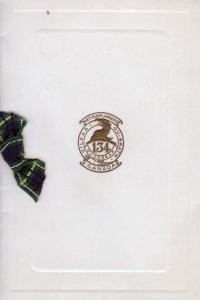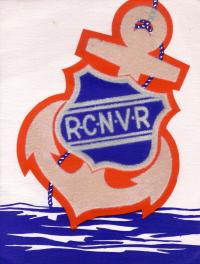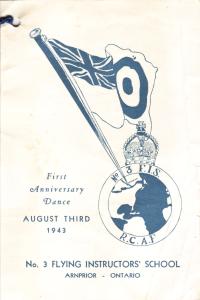Relaxing
Books behind barbed wire
Canadians could send books to their loved ones in enemy prison camps, but only through companies that had a postal censorship permit to handle such shipments.
Like a medieval knight ...
This Christmas message draws a direct connection between a medieval knight on horseback and the lowly soldier of the Second World War.
A bout for the soldiers
A large crowd was on hand to watch two Canadian soldiers contest the boxing championship at Seaford, a military camp in southern England, in April 1919.
Getting parcels to the troops
To ensure efficient delivery of mail to units overseas, Canadians were encouraged to use standard address labels, and to ensure that packages were within the weight limit of eleven pounds.
Parcels for prisoners of war
To reduce delays in shipment, all parcels destined for Canadian POWs in camps in Germany had to be accompanied by a declaration of their contents.
"All well and safe"
A common method of wireless trans-Atlantic correspondence was radio telegraphy. Canadian servicemen sent messages home via the Canadian Marconi Company through Canadian Pacific telegram.
A Highlander's Christmas Greetings
The 134th Battalion, Canadian Expeditionary Force, was raised by Toronto's 48th Highlanders. It never saw action as a unit but was broken up to provide reinforcements to other battalions.
Christmas wishes from a sailor
This card used by a sailor in the Royal Canadian Naval Volunteer Reserve gives a jaunty impression of life at sea.
A Canadian frigate at Christmas
The Beacon Hill, a frigate built in Esquimalt, British Columbia, went into service in May 1944. She served on convoy and escort work in the North Atlantic for the rest of the war, and was eventually paid off in 1967.
Training flight instructors
The school for flight instructors at Arnprior, in operation from August 1942 to January 1944, was part of the British Commonwealth Air Training Plan.

